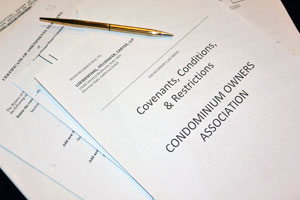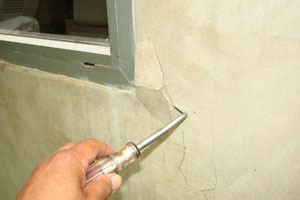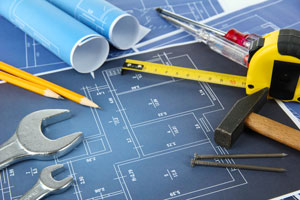LHC Newsletter Vol. 5, No. 1
“The Time is Now to Inspect Your Property”
By: David A. Loewenthal and Robert D. Hillshafer, Partners
As we enter 2011, we are hopefully moving away from the worst real estate market in the last eighty (80) years. Unfortunately, the effects of the last twelve (12) years of the real estate market will likely plague homeowners associations for many years to come, most notably in the quality of construction which leads to construction defect claims.
During the last real estate economic boom (1999-2006) common interest developments were constructed rapidly to keep up with the pace of demand. Developers often constructed projects in an accelerated fashions, using contractors who were not necessarily well-staffed, and laborers who were not always properly trained or qualified with the type of construction in which they were engaged. Also, certain building materials used during this time period may not have long-term useful lives or may have potential health effects (e.g.: Chinese drywall). See LHC Newsletter Vol. 4, No. 2: “Condominium Buyers Beware” – https://lhclawyers.net/newsletter/LHCNwsltrVol4No2.pdf
We have also learned during the last several years that many of these developers who grew rapidly during the economic boom have also just as quickly, collapsed. Just as many purchasers were taking advantage of easy to obtain financing; developers were able to obtain very advantageous construction loans from lending institutions. As the financing markets changed dramatically, impacting sales and pricing; these developers have either substantially reduced their work forces, including customer service and warranty departments, or have gone out of business altogether. Even the largest of developers have substantially contracted in size from the high point of construction and sales activities.
In combination with the change of the market and the contraction of the development industry generally, the statutory framework has become more technical relative to construction defect claims in new construction. Construction defect claims involving new developments are governed by what was originally known as SB800 and is now codified in California Civil Code section 895 et seq. This statute, commonly known as the Builders Right to Repair applies to those properties, including single family homes, condominiums and townhomes, originally sold on or after January 1, 2003 and is binding on all original purchasers and their successors in interest. We previously published an article on this matter entitled SB 800 Construction Defect Claims: https://lhclawyers.net/articles/SB800%20-%20Construction%20Defects.html . Perhaps the most critical element of this group of laws is the establishment of strict and sometimes short statutes of limitations (the time within which a lawsuit can be filed) for various kinds of defective construction.
As a result of these three (3) converging issues discussed above, it is imperative that management firms, Boards of Directors and individual homeowners are aware of this statutory framework and undertake thorough inspections of all common areas, buildings and components of their individual homes to determine if they are (1) performing properly, constructed defectively or have already experienced damage; and (2) whether they still have a viable claim against the developers and contractors under the controlling statutes.
Even a developer/contractor who is out of business, or has filed for bankruptcy, may still be a viable defendant which an association or owner can pursue. Liability insurance policies of developers/contractors typically survive the entity going out of business or going through a bankruptcy. However, time is of the essence for the association and/or owner to identify their claims and assert them against a developer/contractor as rapidly as possible since other claimants may also be seeking recovery against the developer/contractors, and there will likely be a limit to the amount of insurance coverage for those entities.
Whether you are a member of the Board of Directors or an owner of a residence, the following is a list of items that you should have professionally inspected at your property if it was constructed within the last ten (10) years:
- Have you experienced or are there any signs of water intrusion into the building. Common locations where water intrusion is experienced include, but not be limited to, windows, doors, sliders, roofs, walls, patios, balconies, and decks;
- Cracking of the exterior stucco or interior drywall;
- Leaks arising from the plumbing or sewage system;
- Cracked concrete slabs;
- Racking/distortion of door frames or windows;
- Any other deficiency or problem at the property that you would not generally expect to see.
Generally an individual’s single greatest asset is their home. Thus, whether you are on a Board of Directors of a homeowners association or an owner of a single family residence; you need to do everything that you can in order to protect that asset. Just as you performed due diligence in selecting a single family home or condominium to purchase, that same due diligence is required in making sure that your home performs as it was intended. Because the statutory clock is always ticking, there is no better time than now to inspect your property.
CONSTRUCTION DEFECT LITIGATION – Act while you still can
- Is your Homeowners Association or individual home less than 10 years old?
- Are you aware of or concerned about possible defects and/or damages with your property?
- Have you experienced defects/damages such as water intrusion, cracked stucco, cracked drywall, plumbing leaks, racking of doors and windows, etc.?
- If you have answered yes to these questions then you may wish to contact our office to arrange for a visual inspection of your property with an attorney and a construction consultant, at no charge to you.*
- The partners at Loewenthal, Hillshafer & Carter, LLP (LHC) have over 75 years of combined experience in construction defect litigation.
- LHC works with a team of construction experts that we have developed over the years to handle the various need of our clients whose properties are suffering from construction defects.
- The partners at LHC have been involved in verdicts and settlements for our clients in excess of $200 million.
- To schedule a free visual inspection; please contact us at (866) 474-5529
*Loewenthal, Hillshafer & Carter LLP, (LHC) has sole discretion in deciding whether to perform an onsite inspection. No representations or warranties are made herein with respect to any potential claims, liability or recovery Neither LHC nor the Association/Homeowner is obligated to retain the services of LHC, nor is LHC obligated to handle any claims or case in any future matter or claim. Any retainment of LHC must be through a formal, executed engagement agreement.
©2011 by Loewenthal, Hillshafer & Carter, LLP. All rights reserved. Permission is granted to reproduce or transmit in any form any part of this newsletter as long as proper attribution to Loewenthal, Hillshafer & Carter, LLP is given. Due to the rapidly changing nature of the law, information contained in this publication may become outdated. As a result, lawyers and all others using this material must research original sources of authority.


